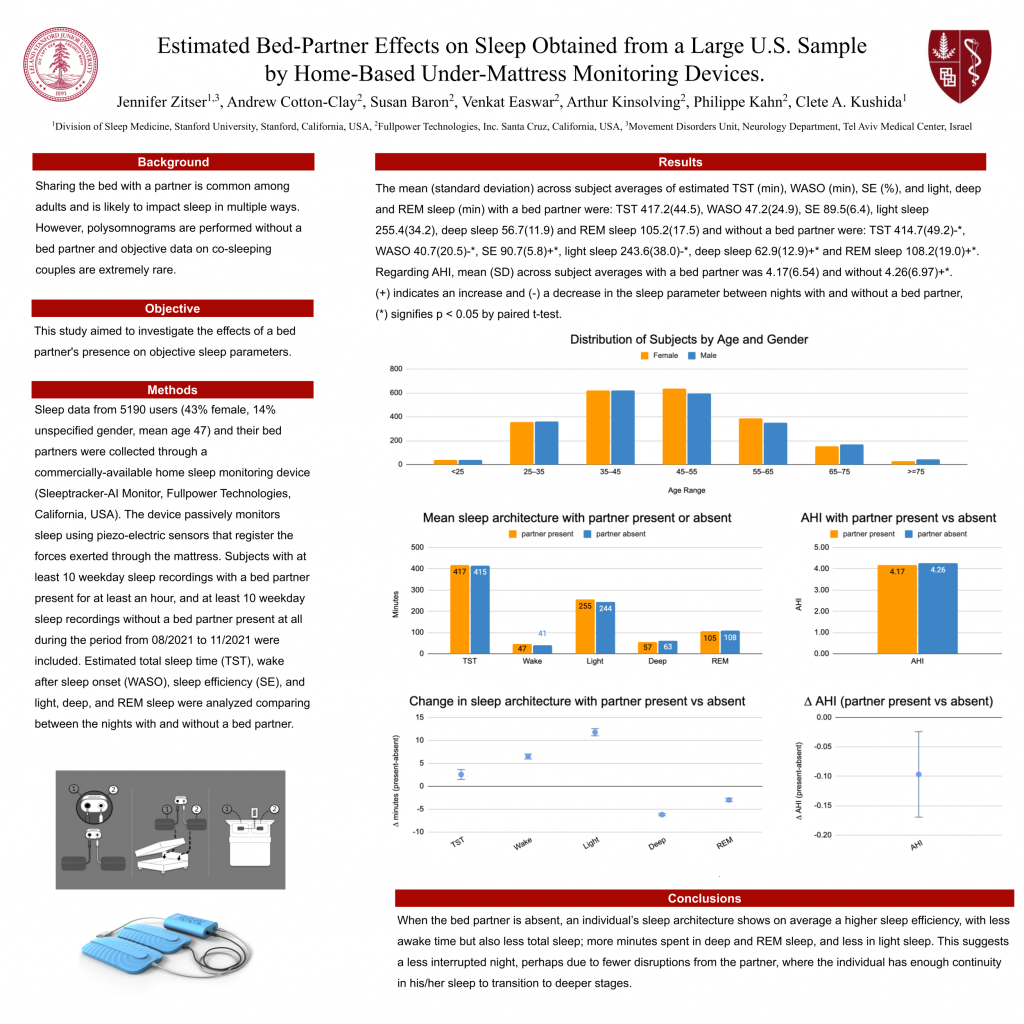A joint study between Stanford Medical Research and Fullpower-AI.
Sharing the bed with a partner is common among adults and is likely to impact sleep in multiple ways. However, gold standard polysomnograms are performed without a bed partner, and objective data on co-sleeping couples is scarce.
This large study of over 5,000 users investigates the effects of a bed partner’s presence on objective sleep parameters.
This detailed, science-based study suggests that when the bed partner is absent, an individual’s sleep architecture shows, on average, a higher sleep efficiency, with less micro-awake time and total sleep, more minutes spent in deep and REM sleep, and less in light sleep. This suggests a less interrupted night, perhaps due to fewer disruptions from the partner, where the individual has enough continuity in their sleep to transition to deeper stages. Just like with pets sharing our bed, it’s challenging to quantify the counter-balancing positive emotional impact of having a bed partner.

Links:
– The effects of sleep continuity disruption on positive mood and sleep architecture in healthy adults
– Snoring and sleep architecture